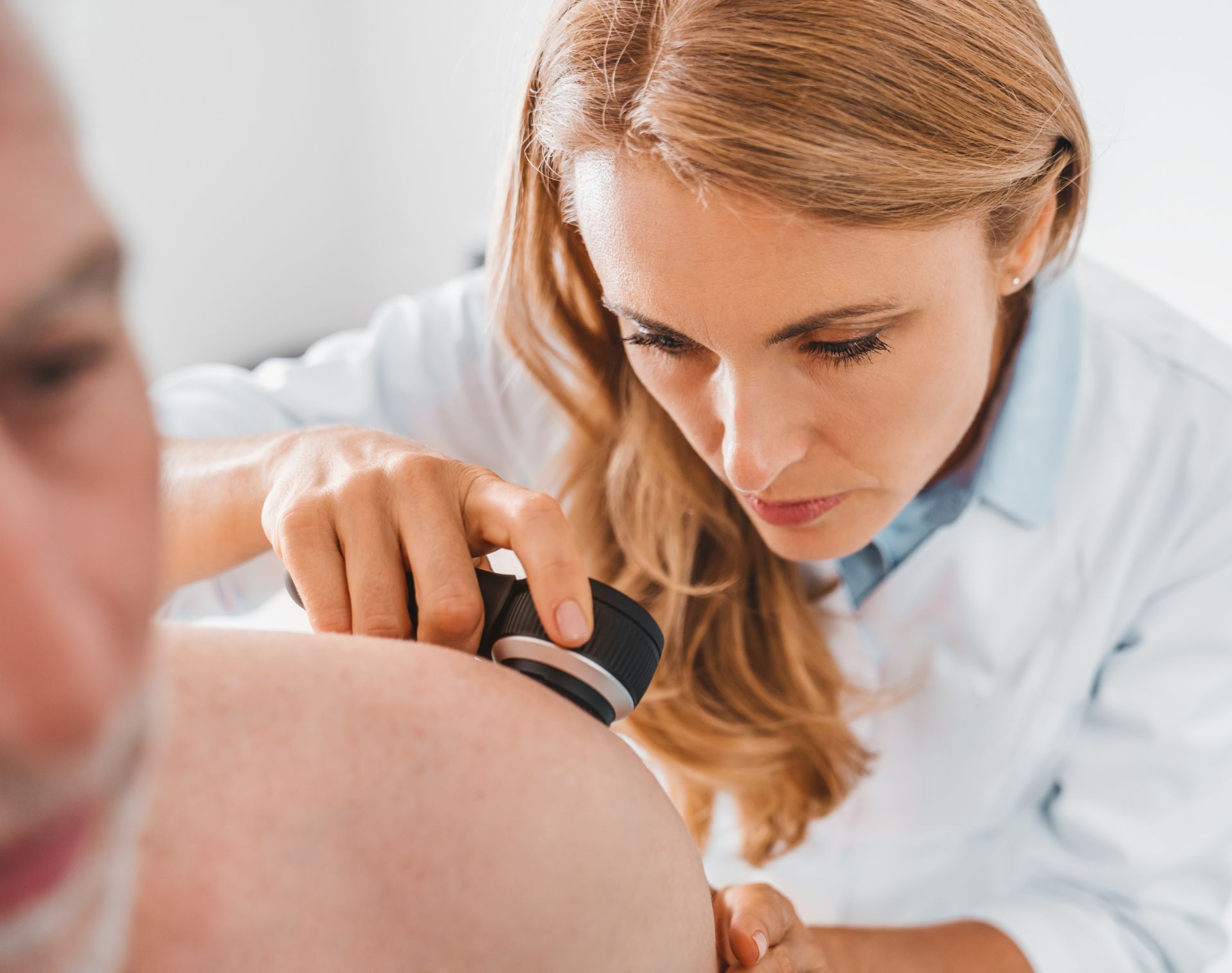Skin lesions can be caused by injury or damage to the skin, and they will often cause the skin to look different in that particular area. They can occur anywhere on the body.
Skin lesions can vary in appearance depending on where it is located and what has caused them, but may look like:
- Flat marks that are a different colour to your skin tone
- Raised bumps
- Blisters filled with fluid
- Raised bumps filled with pus or white fluid
Acne, birthmarks and sunburn may be classified as skin lesions.
There are many reasons why you may develop a skin lesion. The causes of skin lesions can include:
- Sunburn
- Allergic reactions (to allergens such as insect bites)
- Injuries or wounds
- Viral infections like herpes
- Viral infections such as HIV
- Underlying medical conditions such as cancer or autoimmune diseases
Sometimes, a skin lesion can itch, swell and cause you pain, but that doesn’t always mean that it is infected. If you notice that the lesion is getting bigger, causing severe pain, leaking blood or pus and refusing to heal, then you must seek medical attention so that it can be treated.
Are skin lesions contagious?
It will depend on the cause of your skin lesion as to whether or not it is contagious. Viruses and bacteria can be spread to other people and cause the same skin lesion. For example, impetigo is a contagious skin condition that can cause skin lesions so it will impact others who come into contact with your lesion.
Treatment for skin lesions will depend entirely on their cause. Usually, a topical lotion or oral medication will be prescribed or recommended to help heal them. In some cases, they may need further investigation to see if an underlying cause needs to be treated first. If the lesions are identified as cancerous, surgery and other medication may be needed.
The best way to know for sure what type of treatment your skin lesion needs is to visit a doctor.
